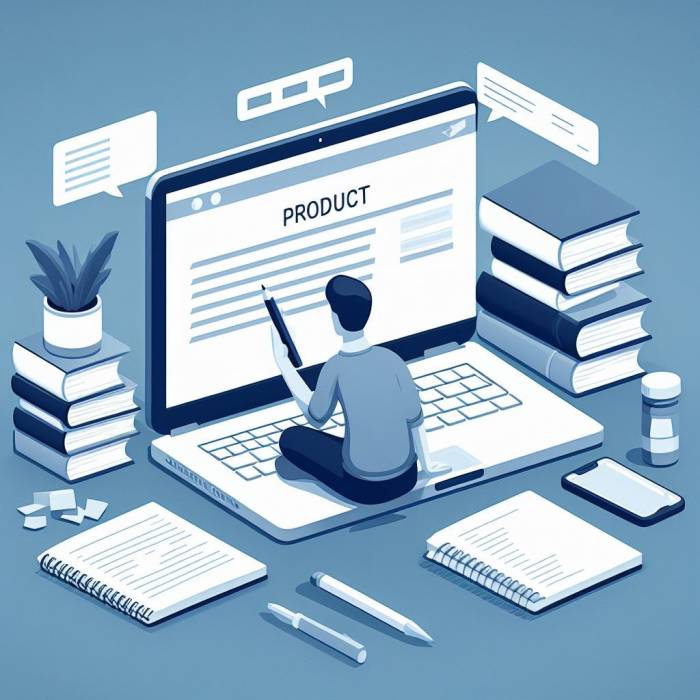Writing Product Tutorials dives into the world of creating impactful guides, with examples that showcase the power of well-crafted tutorials. From boosting customer satisfaction to fostering loyalty, this topic covers it all in a fresh and exciting way.
Get ready to explore the ins and outs of crafting tutorials that resonate with your audience, making complex processes digestible and engaging through a hip high school lens.
Introduction to Writing Product Tutorials
Yo, listen up! Let’s talk about the importance of well-written product tutorials, straight up. You feel me?
Product tutorials ain’t just about showing people how to use a product, they about creating a dope experience for the users. When tutorials are on point, they can help users navigate the product like a pro, making them feel all savvy and empowered. That’s the key to keeping customers satisfied and loyal, ya dig?
Examples of Successful Product Tutorials
Check it – remember when Apple dropped them AirPods? Their tutorials were so lit, showing users how to pair ’em up with their devices in a few simple steps. That made the whole AirPods vibe mad smooth, and users were feeling like tech gurus in no time.
- Apple AirPods tutorial increased user confidence in using the product.
- Users were able to enjoy the full features of the product without stress.
- It boosted customer satisfaction and loyalty towards the Apple brand.
How Product Tutorials Enhance Customer Satisfaction and Loyalty
Peep this – when a company drops a well-crafted tutorial, customers ain’t just learning how to use a product, they feeling valued and supported. It’s like the company saying, “Yo, we got your back, fam.” And that’s how you build a strong bond with your customers, keeping ’em coming back for more.
Remember, a killer product tutorial ain’t just a guide – it’s a whole vibe that can make or break a user’s experience.
Understanding the Target Audience

When creating product tutorials, it is crucial to identify the target audience to tailor the content effectively. Understanding whether the audience consists of beginners, intermediate users, or experts will help in crafting a writing style that resonates with their knowledge level.
Tailoring Writing Style and Content, Writing Product Tutorials
To suit the audience’s knowledge level, beginners may require more detailed explanations, step-by-step instructions, and basic terminology. Intermediate users might benefit from a mix of in-depth explanations and advanced tips, while experts may prefer concise, technical language and advanced techniques. Adapting the writing style to match the audience’s expertise ensures that the tutorial is engaging and informative for all.
- Use simple language and avoid jargon for beginners.
- Provide more advanced tips and tricks for intermediate users.
- Include technical terms and in-depth analysis for experts.
Addressing Pain Points
It is essential to address common pain points or challenges faced by the audience to make the tutorial more valuable and relevant. By understanding the struggles of the target audience, the tutorial can offer solutions, tips, and strategies to overcome obstacles effectively.
- Identify common issues faced by the audience.
- Offer practical solutions and workarounds.
- Provide real-life examples to illustrate problem-solving.
Structuring the Tutorial Content: Writing Product Tutorials
When creating a product tutorial, it’s crucial to consider the essential components that make it informative and easy to follow. These components typically include an introduction to the product, detailed step-by-step instructions, and troubleshooting tips to address common issues that users may encounter.
Introduction
The introduction sets the stage for the tutorial by providing an overview of the product and its key features. It should be concise yet engaging, capturing the reader’s attention and making them eager to learn more.
Step-by-Step Instructions
Organizing information in a logical and coherent manner is key to ensuring that users can easily follow along. Use clear and concise language, break down complex tasks into smaller steps, and provide examples or visuals to clarify any confusing points.
Troubleshooting Tips
Including troubleshooting tips in your tutorial can help users overcome common challenges they may encounter while using the product. Offer solutions to potential problems, provide workarounds, and suggest resources for further assistance.
Importance of Visuals
Visual aids such as images, diagrams, or videos can greatly enhance the understanding of the tutorial content. They provide a visual reference that complements the text, making it easier for users to grasp complex concepts and follow instructions accurately.
Writing Clear and Concise Steps

When writing product tutorials, it’s crucial to ensure that your steps are clear and easy to follow. This will help your audience understand the process without any confusion.
Using Simple Language
To make your steps easy to follow, use simple language that is easily understood by your target audience. Avoid using technical jargon that may confuse readers who are not familiar with the product or process. Instead, opt for plain language that anyone can grasp.
- Avoid using complicated terms that may require explanation.
- Use everyday language that is familiar to your audience.
- Break down technical terms into simpler terms for better understanding.
Breaking Down Complex Processes
Breaking down complex processes into digestible steps is key to writing clear tutorials. By simplifying each step, you can make the overall process more manageable for your audience.
- Start by outlining the main goal or objective of the tutorial.
- Break down the process into smaller, easy-to-follow steps.
- Use bullet points or numbered lists to clearly present each step.
- Provide examples or visual aids to further clarify each step.